ÖBB 1044/1144 Pack
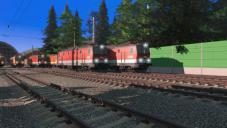
This package contains the locomotive classes 1044 and 1144 of the Austrian federal railways ÖBB. These locomotives, sometimes called "Alps Vacuum Cleaners" due to their sounds are some of the most iconic Austrian locomotives
Tramburg for PTP2
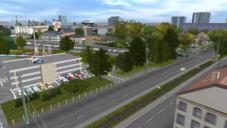
Hauptstrecke Rhein-Ruhr Announcements

This pack contains passenger information system announcements for the Hauptstrecke Rhein-Ruhr route in Train Sim World. Uses the FIS2005 tool running in the background to play announcements while playing TSW.
Cooperation with Trainworks. Download from Trainworks website.
Download: http://x-z.eu/TWXHRRA
Main Spessart Bahn Announcements
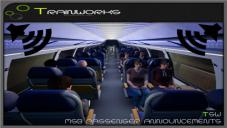
This pack contains passenger information system announcements for the Main Spessart Bahn route in Train Sim World. Uses the FIS2005 tool running in the background to play announcements while playing TSW.
Cooperation with Trainworks. Download from Trainworks website.
Download: http://x-z.eu/TWXMSBA
Rhein-Ruhr Osten Announcements
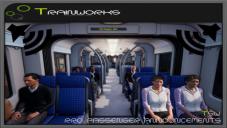
This pack contains passenger information system announcements for the Rhein-Ruhr Osten route in Train Sim World. Uses the FIS2005 tool running in the background to play announcements while playing TSW.
Cooperation with Trainworks. Download from Trainworks website.
Download: http://x-z.eu/TWXRROA
Rapid Transit Announcements
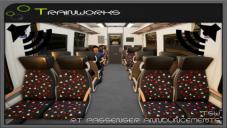
This pack contains passenger information system announcements for the Rapid Transit route in Train Sim World. Uses the FIS2005 tool running in the background to play announcements while playing TSW.
Cooperation with Trainworks. Download from Trainworks website.
Download: http://x-z.eu/TWXRTA
Ruhr-Sieg Nord Announcements
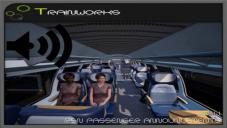
This pack contains passenger information system announcements for the Ruhr-Sieg Nord route in Train Sim World. Uses the FIS2005 tool running in the background to play announcements while playing TSW.
Cooperation with Trainworks. Download from Trainworks website.
Download: http://x-z.eu/TWXRSNA
New Haven Railroad - R2a Mountain
Hello all and happy 2020! Cranking out another release here. Enjoy the hard work and progress of the long lost but not forgotten New Haven 4-8-2 "Mountain" Locomotives. You can learn more history about the locomotive here.
Cooperation with Greencoast Studios. Available for purchase on the Greencoast Studios store.
TRS19 only: http://x-z.eu/GCSNHR219
Pennsylvania Railroad - C1
Pennsylvania Railroad - E6s
Class E6 on the Pennsylvania Railroad was the final type of 4-4-2 "Atlantic" locomotive built by the railroad, and second only to the Milwaukee Road's streamlined class A in size, speed and power. Although quickly ceding top-flight trains to the larger K4s Pacifics, the E6 remained a popular locomotive on lesser services and some lasted to the end of steam on the PRR. The E6 was designed by the Pennsy's General Superintendent of Motive Power, Lines East, Alfred W. Gibbs, and his team.
Pennsylvania Railroad - H6sb
The first one to ever see a simulator, the Pennsylvania Railroad's class H6, H6sa, and H6sb steam locomotives were of the 2-8-0 "Consolidation" freight type, the most numerous class on the railroad with 2,032 units, and the second most prolific 2-8-0 class in North America, with the USATC S160 class rostering 88 units more. Class H6 were used throughout the system as mainline freight haulers, on local freights, and as switchers in yards. They were frequently seen double- and tripleheading long freight trains up the steep grades on the Pennsy.
Pennsylvania Railroad - Q2
The Pennsylvania Railroad's class Q2 comprised one prototype and twenty-five production duplex steam locomotives of 4-4-6-4 wheel arrangement. They were the largest non-articulated locomotives ever built and the most powerful locomotives ever static tested, producing 7,987 cylinder horsepower (5,956 kW) on the PRR's static test plant. They were by far the most successful duplex type. The duplex propensity to slip was combated by an automatic slip control mechanism that reduced power to the slipping unit.
Baltimore & Ohio - S1a
The Baltimore and Ohio's S-1a 2-10-2s (also known as the "Big Sixes") where built in 1923, and where an upgrade to the 1914 built S class locomotives. The S-1a's (#6100 - 6224) sported larger drivers than the previous 2-10-2s, as well as other improvements to the early design. While most 2-10-2s where built for low speed dragging, the S-1a's where able to pull heavy trains at higher speeds, making them perfect engines for the B&O's Sand Patch Grade.
Norfolk & Western - M2
The Norfolk and Western M2's, built in 1910 by the Baldwin Locomotive Works, where the last and heaviest 4-8-0s in the US. The M2 was the successor to the Class M and M1 and sported a larger boiler and improved walschaerts valve gear. Although more powerful than the M's, the M2s were notoriously poor steamers due to their smaller fireboxes and rode extremely rough. Regardless of their short-comings, the M2s would survive through to the late 50's as they where the heaviest non-articulated freight locomotives ever built for the N&W and where seen primarily on heavy ore drags.
Indiana Harbor Belt - U4a "Super Switcher" TRS19
The U4a class 0-8-0s (numbers 100-102), were built for the Indiana Harbor Belt Railroad in 1927 by Alco Brooks. These heavy 3-cylinder 0-8-0s known as "Super Switchers" packed a powerful 89,500 pounds of tractive effort, making them the most powerful engines on the roster, out pulling even their 2-8-2s. These engines also had booster engines on the lead trucks of their tenders, creating a high starting tractive effort.
Western Maryland - I2 "Decapod"
The I-2 Decapods built for the Western Maryland Railway were the largest ever built, at almost 420,000 lb (190 t) weight, and are a notable exception to the general rule of thumb for the comfort of the ride on a 2-10-0 wheel arrangement, crews said the engines cruised smoothly up to 50mph without becoming a rough ride. (After the running gear was redesigned by the WM) The WM's I-2 are also noted as the strongest Decapods ever built, at 96,315lbs of tractive effort.
Read more here: https://en.wikipedia.org/wiki/2-10-0
